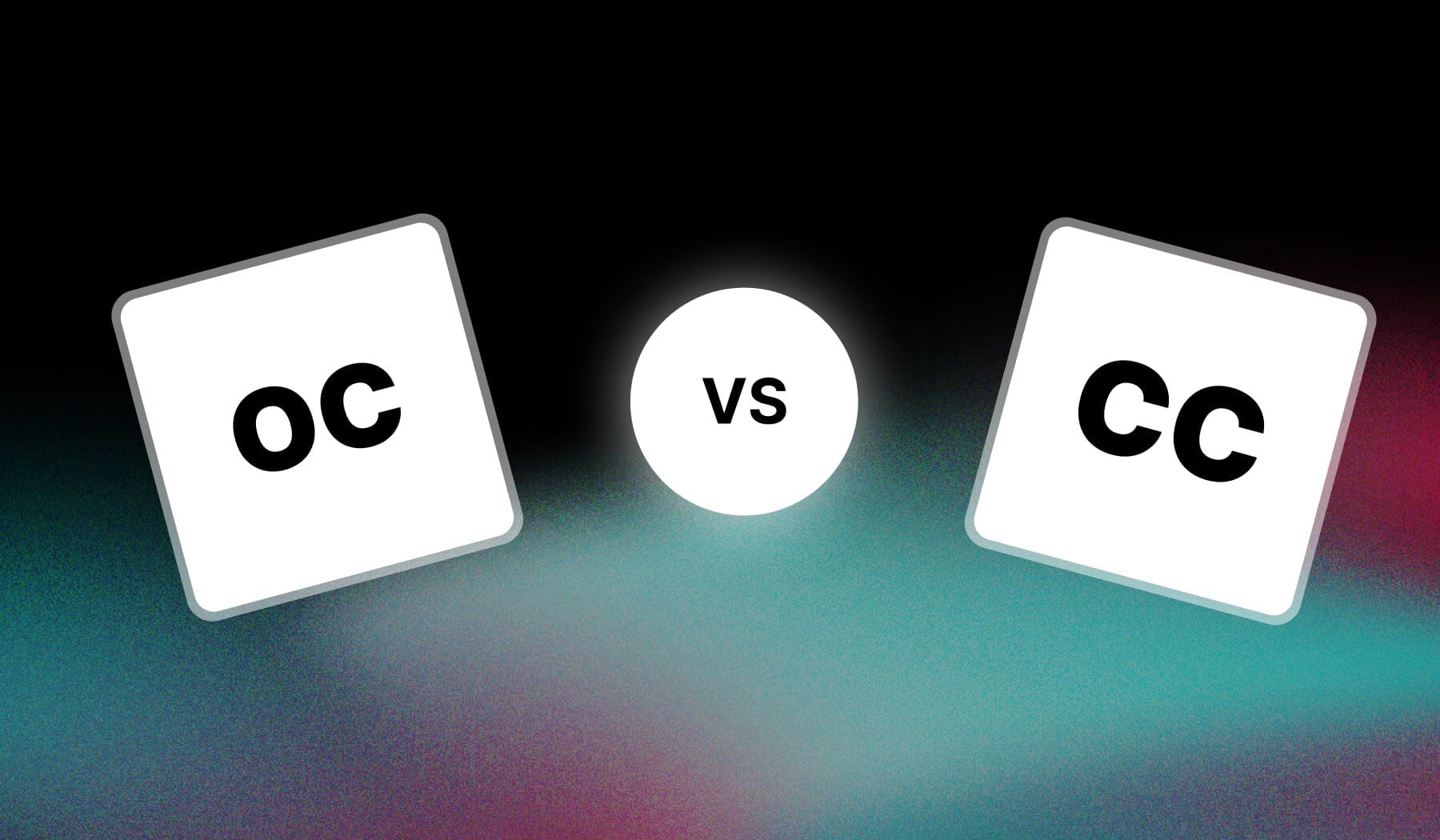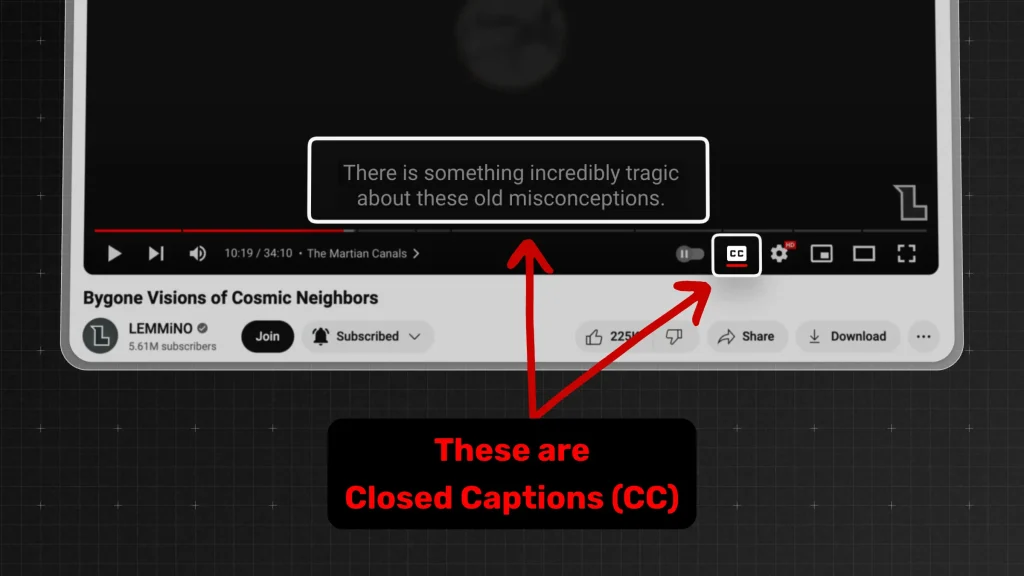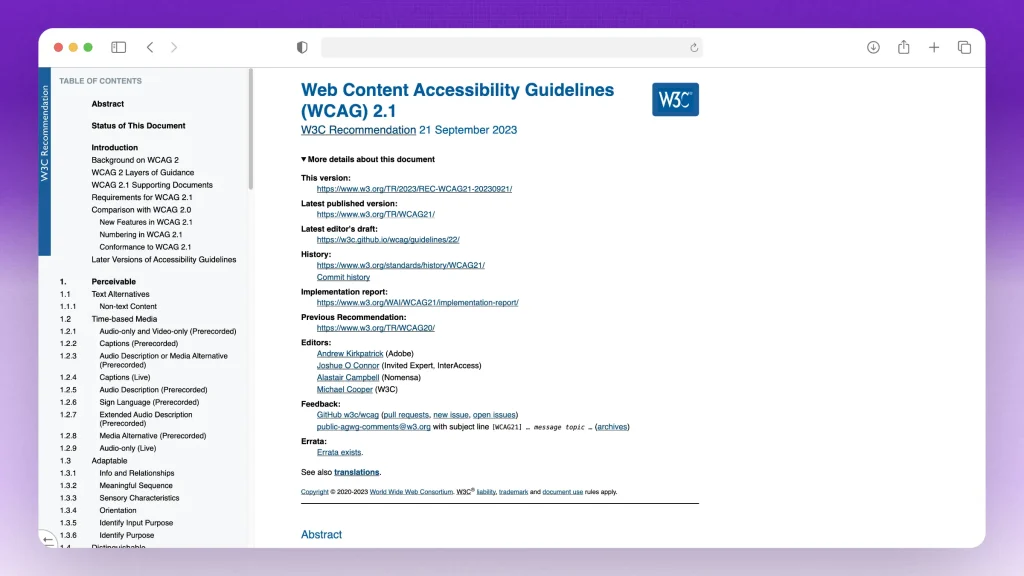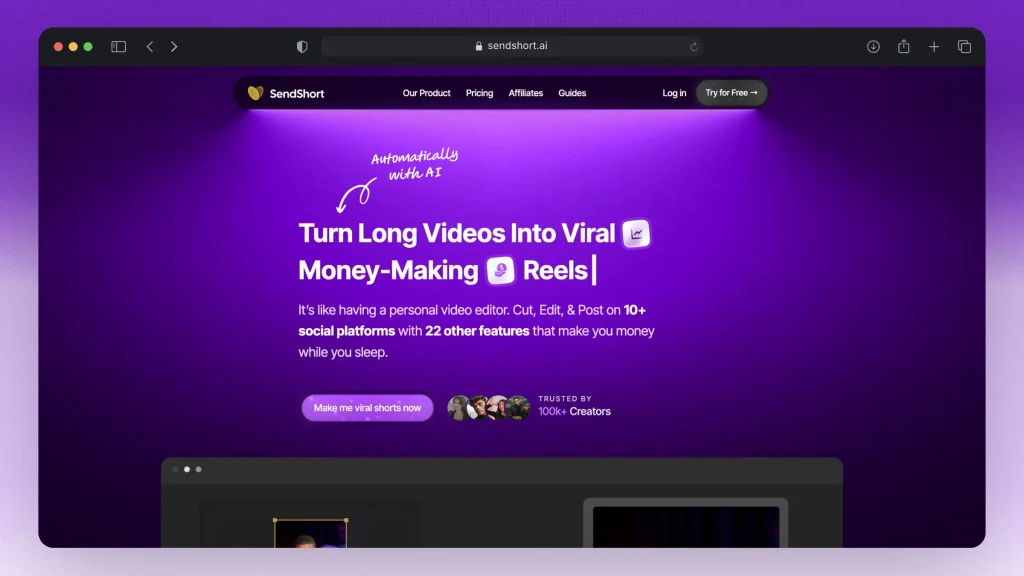

- Shortly, closed and open captions are very similar
- Subtitles are a completely different thing.
In this guide, my team and I will settle the debate — we’ll teach you everything about open/closed captions and what sets them apart.
Related Guide: Differences between subtitles and captions.
Key Takeaways
The Answer: Open captions can’t be turned off, while closed captions can be.
- Open captions are permanently displayed on the video and can’t be turned off, ensuring visibility for all viewers.
- Closed captions can be toggled on or off by the viewer and include additional information like sound effects, making them more flexible.
These subtle differences are crucial depending on your content’s target audience and viewing platforms.

Differences: Open vs Closed Captions
Captioning is the process of adding text to a video or audio content that displays the spoken dialogue, sounds, and other relevant audio information.
Here are the main differences:
| Feature | Open Captions | Closed Captions |
|---|---|---|
| Visibility | Always visible; cannot be turned off | Can be toggled on or off by the viewer |
| Accessibility | Accessible to everyone | Primarily for the deaf and hard of hearing |
| Language Options | Often provides translations directly | Can offer multiple languages |
| Format | Burned into the video | Available in various formats (e.g. SRT) |
| Style | Can be stylized in terms of font and color | Standardized appearance, less customizable |
| Content | Only includes dialogue | Includes dialogue, sound effects, and speaker identification |
Though, this is another “short” way of answering this question.
Join me and let’s go in-depth on the differences between the two caption styles.
1. What are Closed Captions?
Answer: Closed captions are a text representation of the audio content in a video, designed primarily for viewers who are deaf or hard of hearing.
They can be toggled on or off, providing accessibility features that include not just spoken dialogue but also descriptions of sound effects, music cues, and speaker identification, enhancing the viewing experience for all audiences.
Example: Below is a video with closed captions.

To turn on captions on YouTube, just click the “CC” icon like we did in the image above. This feature works for any YouTube video!
Pros of Closed Captions:
- User Control: Viewers can toggle them on or off based on their preference.
- Accessibility: Provides essential support for the deaf and hard of hearing community.
- Multiple Languages: Often available in different languages, catering to a broader audience.
- Detailed Information: Includes not only dialogue but also sound effects and speaker identification.
- Less Intrusive: Can be hidden when not needed, allowing for an uninterrupted viewing experience.
Cons of Closed Captions:
- Requires Settings Adjustment: Viewers must actively turn them on, which some may forget or overlook.
- Compatibility Issues: May not be available on all platforms or devices, limiting access.
- Potential for Inconsistency: Quality and accuracy of captions can vary depending on the source.
- Distraction: Some viewers may find captions distracting, especially if they prefer to focus solely on visuals.
2. What are Open Captions?
Answer: Open captions are text overlays permanently embedded in a video that display the spoken dialogue and relevant audio information.
Unlike closed captions, they cannot be turned off, ensuring that all viewers, including those who are deaf or hard of hearing, see the captions regardless of their preferences.
Example: Movies at the cinema have open captions → they’re constantly there and you can’t remove them (unless you’re watching a movie without captions).
More about this example here: nyc.gov/captions.
Pros of Open Captions:
- Always Visible: Captions are permanently displayed, ensuring accessibility for all viewers.
- No User Action Required: Viewers don’t need to adjust settings to see the captions.
- Consistency: Provides a uniform viewing experience across all devices and platforms.
- Useful for Translations: Often used for foreign language content, allowing viewers to read translations directly.
- Enhances Engagement: Can help keep viewers engaged by providing context and clarity.
Cons of Open Captions:
- No Control: Viewers cannot turn them off, which may annoy those who prefer not to see captions.
- Potentially Cluttered Visuals: Can obstruct the view of important visuals in the video.
- Limited Customization: Styling options are often fixed, lacking the flexibility of closed captions.
- May Not Suit All Content: Some types of videos or genres may not benefit from open captions, potentially affecting the viewing experience.

How to Choose Between Open & Closed Captions
The #1 factor in choosing between open and closed captions is user control.
Closed captions allow viewers to turn captions on or off as needed, providing flexibility and a better user experience.
1. Audience Accessibility Needs
- Closed Captions: Ideal if you want viewers to have the option to turn captions on or off, catering to a mixed audience with varying needs.
- Open Captions: Useful if you know a large portion of your audience needs captions and you want to ensure they’re always visible.
2. Platform Requirements
Some platforms or devices may not support closed captions, making open captions a better choice to ensure captions appear consistently across all devices.
3. Editing Flexibility
- Closed Captions: Allow for easy editing without re-encoding the entire video, which is helpful if captions need frequent updates.
- Open Captions: Once embedded, they can’t be turned off, so choose open captions if you’re confident in the captions’ accuracy and don’t anticipate changes.
4. Branding and Aesthetic Control
- Open Captions: Provide more control over styling, as you can adjust fonts, colors, and positioning within the video.
- Closed Captions: Typically follow platform standards, so they’re less customizable but generally simpler to implement.
5. Consideration for Accessibility Laws
Some regions have accessibility laws requiring closed captions for digital content.
Closed captions might be the safer choice if accessibility compliance is essential.
In summary, choose closed captions for flexibility and optional viewing, and open captions for a consistent experience with control over the look and feel.
WCAG: Open or Closed Captions?
In the context of WCAG (Web Content Accessibility Guidelines), open and closed captions both help meet accessibility standards…
But they serve different purposes and have distinct implications.

1. Closed Captions: Preferred for Accessibility Compliance
WCAG 2.1 requires captions for audio content in synchronized media (like videos) to make content accessible to people with hearing impairments.
- Closed captions are typically recommended for compliance because they allow users to turn them on or off based on their needs, making content adaptable to all viewers, including those who don’t need captions.
- Closed captions often include descriptions beyond speech, such as background noises and sound effects, which are necessary to fully meet WCAG criteria.
2. Open Captions: Useful for Consistent Accessibility
Open captions are embedded directly into the video and cannot be turned off, ensuring they’re always visible and consistent across platforms.
Although WCAG doesn’t mandate open captions, they can be beneficial when closed captioning support is limited or unavailable (for example, on certain social media platforms).
Open captions can help maintain visual control and styling, which can improve readability, but they require re-encoding for edits.
3. Platform and Device Compatibility
WCAG-compliant platforms should ideally support closed captions, as they are more flexible and offer control for users.
For content on platforms that may not support closed captions or where accessibility is crucial, open captions can be a fallback to meet WCAG requirements by ensuring the content remains accessible.
In essence, closed captions are more flexible and align with WCAG requirements for user-controllable content. Open captions are a reliable alternative where flexibility is limited, though they don’t fully align with WCAG’s emphasis on user control.
SendShort, the Best App for Open & Closed Captions
For both open and closed captions, SendShort is the best app, providing flexible, high-quality captioning options that enhance accessibility and engagement.

Here’s why SendShort is ideal for open and closed captions:
- Customizable Open Captions: SendShort lets you embed captions directly into your video, allowing for a range of fonts, colors, and animations that enhance visibility and style.
- Toggle-Friendly Closed Captions: Viewers can choose to turn captions on or off, giving them control over their viewing experience, especially useful on platforms that support closed captions.
- High Accuracy: SendShort’s AI-driven captioning ensures that both open and closed captions are accurate and synced to the video, minimizing manual edits.
With both open and closed caption options, SendShort makes it easy to create accessible content that appeals to a broader audience, including those watching without sound or with hearing impairments.
FAQ: Open and Closed Captions
1. Should I use open or closed captions?
Answer: Use closed captions if you want to provide viewers the option to toggle them on or off, enhancing accessibility while keeping visuals clear.
Open captions are ideal for ensuring all viewers see the text, especially in multilingual contexts or where accessibility is a priority.
2. What is the difference between OC and CC movies?
Answer: The difference between open caption (OC) and closed caption (CC) movies lies in how the captions are presented.
- Open caption movies have captions permanently displayed on the screen and cannot be turned off, ensuring visibility for all viewers.
- Closed caption movies allow viewers to toggle captions on or off, providing flexibility and catering to individual preferences.
3. What is the difference between open caption and closed caption theater?
Answer: The difference between open caption and closed caption theaters lies in how the captions are presented during a film screening.
- Open Caption Theater: Captions are permanently displayed on the screen for the entire audience, ensuring that everyone can see them regardless of their preferences.
- Closed Caption Theater: Captions can be turned on or off by the viewer, typically displayed through special devices or screens, allowing individuals to control their viewing experience.
Thanks a lot for reading this,
David Ch
Head of the Editing Team at SendShort







